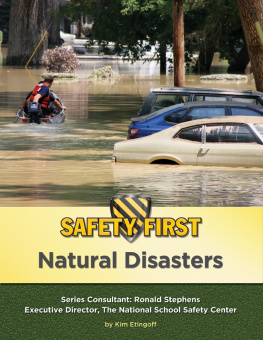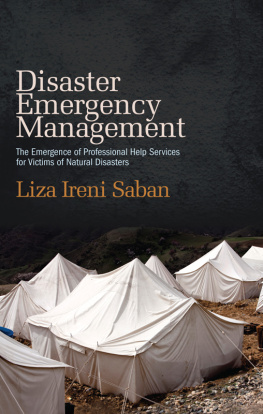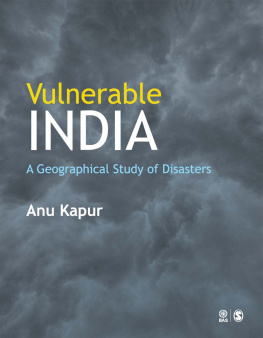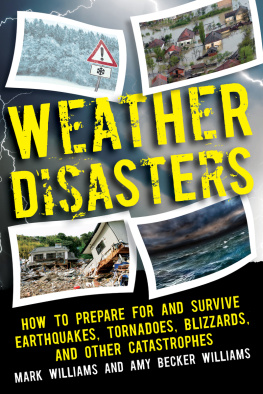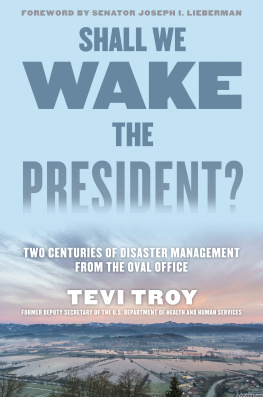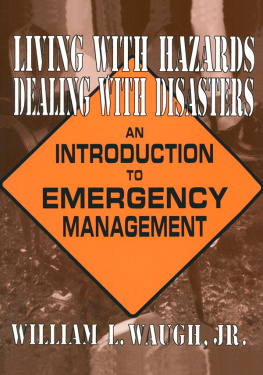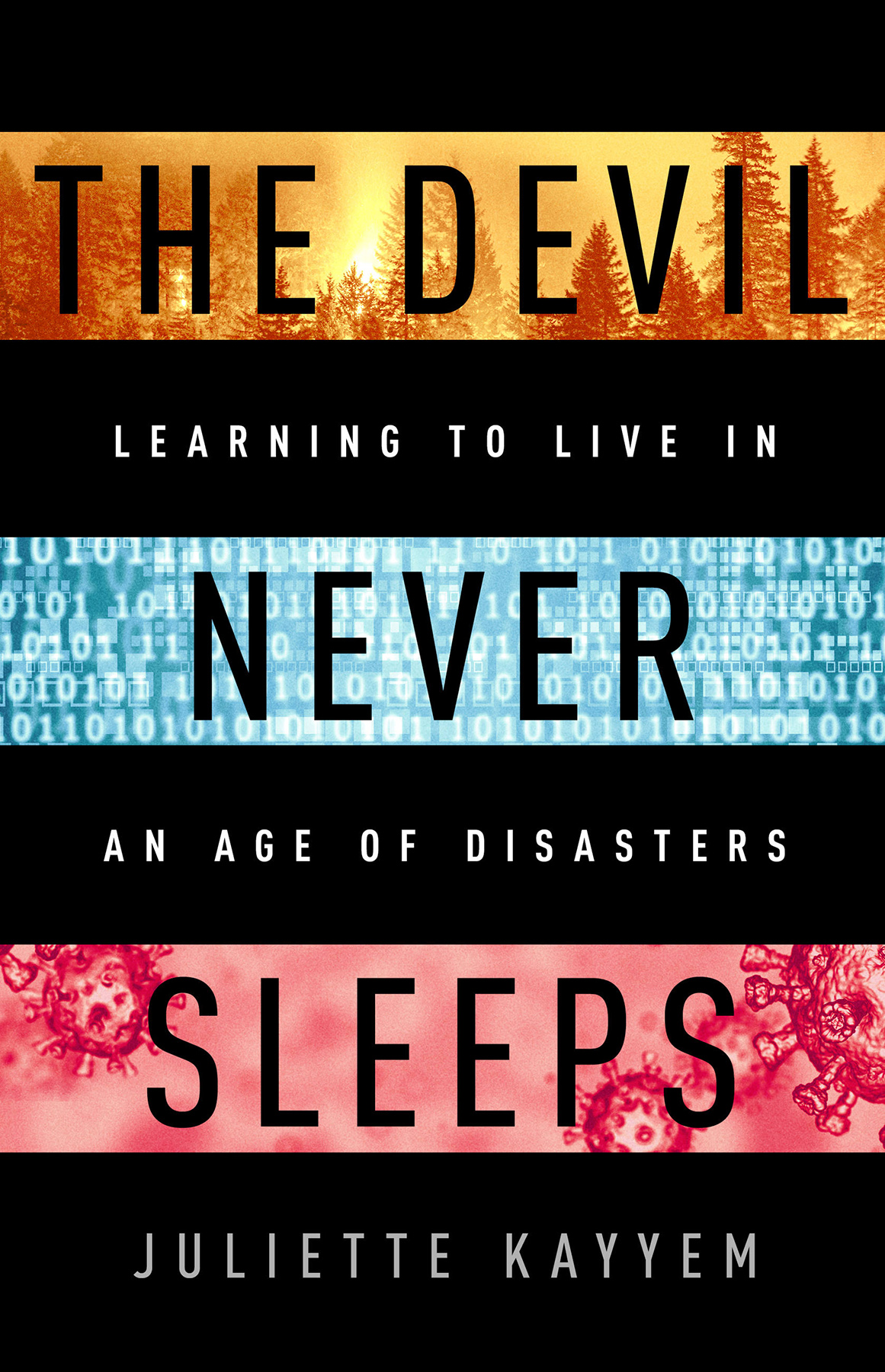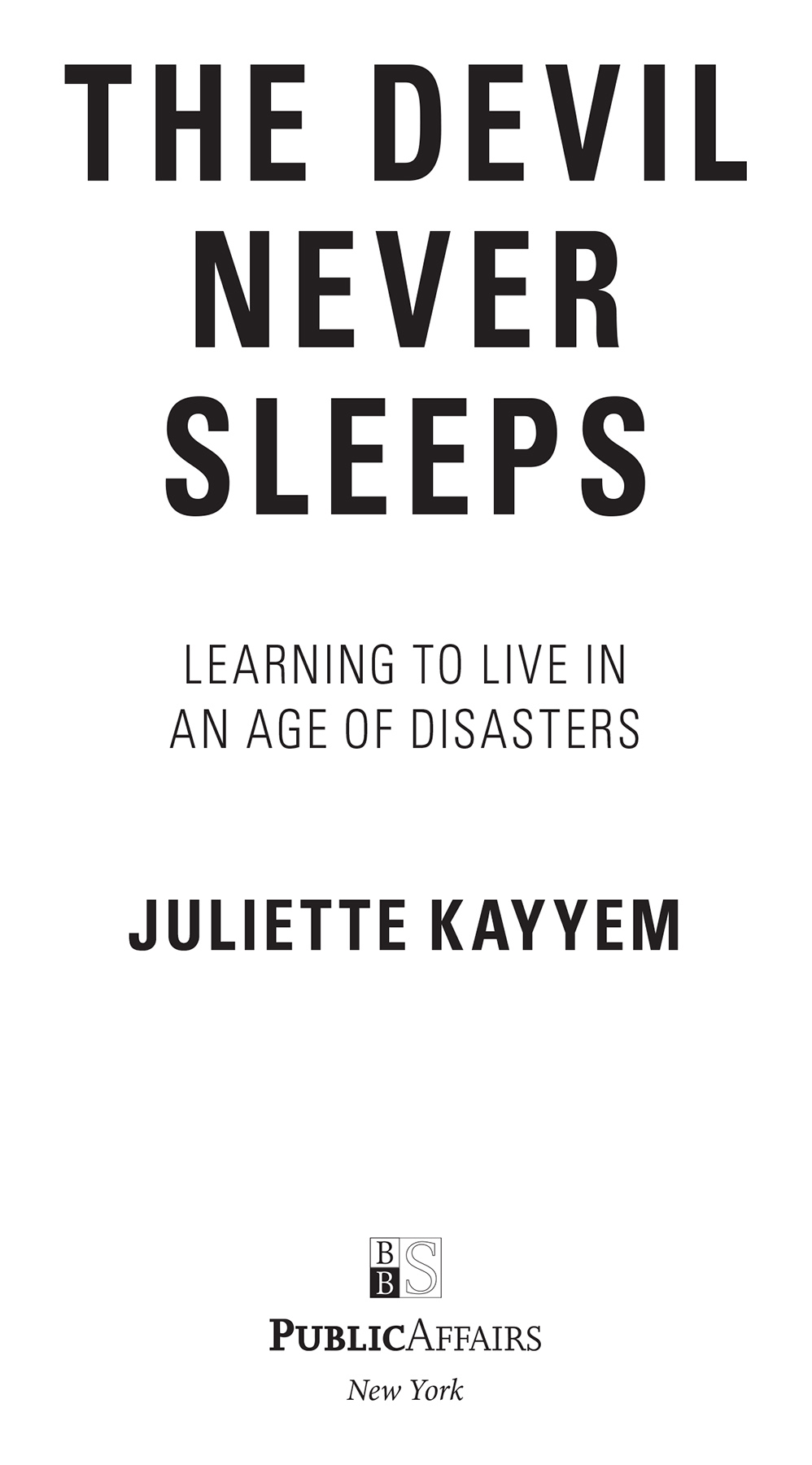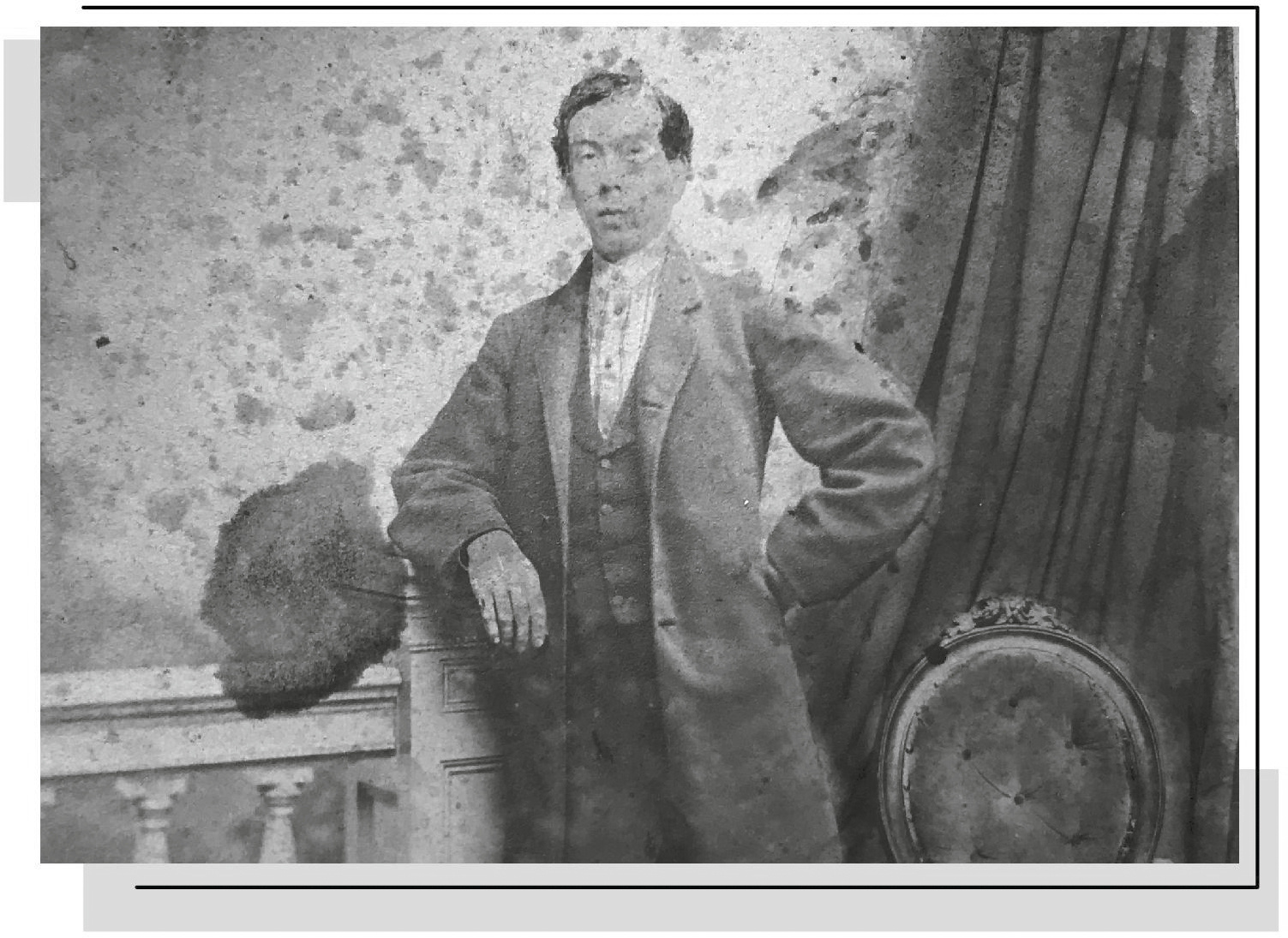Juliette Kayyem is who we call when disaster strikes for a reason: shes calm, unafraid, and deeply informed. Here she leaves no disaster unturned as she shows how we can be ready to respond. Shell open your eyes: youll definitely never think of Fukushima, fires, or even Beyonc the same way again.
Erin Burnett, CNN anchor, Erin Burnett OutFront
From 9/11 through the pandemic, the United States has been battered by several decades of emergencies. Even more, and worse, are ahead. Juliette Kayyem has a clear-eyed, sane, urgent-but-not-frantic set of principles to guide us in dealing with the devil. Well all be better off for following her advice.
James Fallows, National Book Award winner
Juliette Kayyems infectious energy and passion for reasoned crisis management jump out of the pages of her book. She has written a succinct, compelling kitchen-table tutorial on how to get your head around criseswhich are increasingly the normal state of affairs. As she makes clear in her down-to-earth, practical style, we dont have to panic, react, and wring our hands when disaster descends upon us, as it inevitably will. A must-read for first responders, crisis managers, and the normal citizen who wants to anticipate, prepare, cope, and be resilient.
James Clapper, former national intelligence director
Juliette Kayyem combines real-world national security experience, the everyday personal experiences of a private citizen, and the genius of a policy thinker for her compelling and engaging new book, The Devil Never Sleeps . Virtually anything Kayyem writes is a must-read, and she has put it all together to help us prepare for our era of disasters.
Jeh Johnson, former secretary of homeland security
We live in a dangerous world where big trouble is inevitable. Oddly, those who warn us to be better prepared are often dismissed. But Juliette Kayyem refuses to be a modern-day Cassandra. Get your head around this book and get smart. Or ignore her lessons at your own peril.
Miles OBrien, correspondent, PBS NewsHour
An eye-opening look at the disasters that have troubled humans throughout historyand why they seem to be increasing in frequency. An urgent, useful survival manual for our time.
Kirkus
Copyright 2022 by Juliette Kayyem
Cover design by Pete Garceau
Cover images iStock/Getty Images
Cover copyright 2022 by Hachette Book Group, Inc.
Hachette Book Group supports the right to free expression and the value of copyright. The purpose of copyright is to encourage writers and artists to produce the creative works that enrich our culture.
The scanning, uploading, and distribution of this book without permission is a theft of the authors intellectual property. If you would like permission to use material from the book (other than for review purposes), please contact permissions@hbgusa.com. Thank you for your support of the authors rights.
PublicAffairs
Hachette Book Group
1290 Avenue of the Americas, New York, NY 10104
www.publicaffairsbooks.com
@Public_Affairs
First Edition: March 2022
Published by PublicAffairs, an imprint of Perseus Books, LLC, a subsidiary of Hachette Book Group, Inc. The PublicAffairs name and logo is a trademark of the Hachette Book Group.
The Hachette Speakers Bureau provides a wide range of authors for speaking events. To find out more, go to www.hachettespeakersbureau.com or call (866) 376-6591.
The publisher is not responsible for websites (or their content) that are not owned by the publisher.
Library of Congress Control Number: 2021953008
ISBNs: 9781541700093 (hardcover), 9781541700109 (ebook)
E3-20220125-JV-NF-ORI
To my mom and dad
and
to all those who help when others need it the most.
The boys were restless. We all were. It was April 2020, and we had been home, isolated, sheltering for just over a month. They were learning, if it could be called that, remotely after their high school shut down a few weeks before. Their older sister had returned from college, displeased that her freshman year would end taking classes from her bedroom at home. We were all stuck in our house in Cambridge, Massachusetts. Although I, as their mother, might occasionally admit it was special to hold them captive again, they found no such benefits in the situation. As far as the pandemic went, though, we were lucky. Our complaints derived from inconvenience, not wrenching sorrow.
Built in 1840, our rambling and cranky house took a bit of a beating with three teenagers back inside all day, every day. We had spent years tugging it into the modern era, but its bones were still old. It held up well enough for its ageuntil a fan broke.
In the boys second-floor bathroom, the ceiling covers what we had believed was a small crawl space. Above, on the third floor, is my daughters bedroom and a guest bedroom, with storage closets built in nooks and crevices around a slanted ceiling. Behind the closets, an architect had told us, were small crawl spaces that we could ignore, as they had been closed off for so long. So we had lived for a decade not really knowing what was behind those third-floor back walls that hid the space above the second-floor bathroom ceiling.
In April, the boys bathroom ceiling fan stopped working. They didnt tell me. They said they forgot. Instead, as kids will do, they continued to take long, hot showers, oblivious to what the lack of ventilation was doing to the plaster. I would later wonder, Did they not notice the paint chipping? The ceiling plaster eventually fell in a big clump, exposing the crawl space above on the third floor. But it was much more than that. A long, narrow space, only about four feet high, was discovered. Our masked handyman set a ladder and hauled himself up. There was nothing in there; no animals or furniture, no treasure. We found just a single mottled photo.
The photo captured a distinguished-looking man leaning on a railing, a red-tinted drape and chair behind him. There were a few words on the back, a name, a date. I was fascinated and very curious. Who was this man? I took the mystery to Twitter, where I knew online genealogists lurked. Surely someone would know what to do with this. Twitter delivered by the hundreds. There was a lot of speculation about the print, the card stock, and the tinting. In about an hour, Twitter sleuths found out where I lived (its that easy?) through property searches and worked backward from newspaper stories and historical documents. The photo was of a relative of the McCue family, who had lived in my home, their home, from 1917 to 1919.
I should probably admit here that my immediate obsession with this search was also a consequence of the pandemics manipulation of our time, of the concept of time. I, too, was home, distracted, not really myself, though busier than I had ever been. I no longer traveled; an airport fixture, I would not get on a plane for eighteen months. Still, I was not idle in 2020. My career in disaster and crisis management, preparing public and private entities for what they least expected, was in demand. Whether in academia, government, media, or the private sector, I like to say I have had many jobs but one career. I am like a storm chaserbut for disasters in general. I have a reputation for remaining calm when others do not, and my mantra has always been to pace the rage. I have low blood pressure, literally and figuratively.


